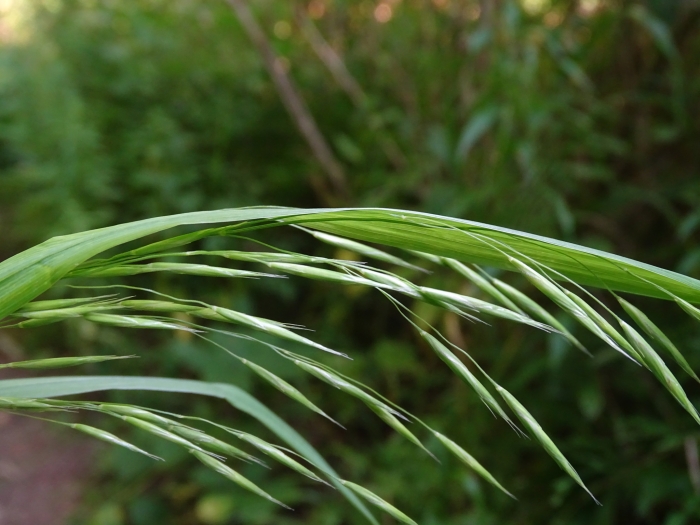Earlyleaf Brome
(Bromus latiglumis)
Earlyleaf Brome (Bromus latiglumis)
/
/

Reuven Martin
Public Domain
Image By:
Reuven Martin
Recorded By:
Copyright:
Public Domain
Copyright Notice:
Photo by: Reuven Martin | License Type: Public Domain | License URL: http://creativecommons.org/publicdomain/zero/1.0/ | Rights Holder: Reuven Martin | Publisher: iNaturalist | Date Created: 2019-07-30T19:18:59-07:00 |































Estimated Native Range
Summary
Bromus latiglumis, commonly known as Earlyleaf Brome, is a deciduous perennial grass native to a variety of habitats including open woodlands, grasslands, and meadows in the Eastern and Central United States, as well as parts of Canada. It forms dense mats or clumps that can range from 0.5 to 2 meters (1 ft 8 in – 6 ft 7 in) in height. This grass species is noted for its adaptability to different light conditions and produces flowers from August to September, which are not particularly showy but are important for seed production.
Earlyleaf Brome is valued for its ability to stabilize soil and prevent erosion, making it a good choice for restoration projects and naturalized areas. It is also used as an ornamental grass in garden designs that aim to create a natural or wild meadow look. This grass is relatively low-maintenance, tolerating a range of light conditions from part shade to full sun, and even full shade. It prefers medium to high moisture levels and can thrive in soils with medium to slow drainage. While not commonly afflicted by diseases, it can sometimes be outcompeted by more aggressive species in a garden setting.CC BY-SA 4.0
Earlyleaf Brome is valued for its ability to stabilize soil and prevent erosion, making it a good choice for restoration projects and naturalized areas. It is also used as an ornamental grass in garden designs that aim to create a natural or wild meadow look. This grass is relatively low-maintenance, tolerating a range of light conditions from part shade to full sun, and even full shade. It prefers medium to high moisture levels and can thrive in soils with medium to slow drainage. While not commonly afflicted by diseases, it can sometimes be outcompeted by more aggressive species in a garden setting.CC BY-SA 4.0
Plant Description
- Plant Type: Grass
- Height: 3-5 feet
- Width: 4-6 feet
- Growth Rate: Moderate
- Flower Color: N/A
- Flowering Season: Summer, Fall
- Leaf Retention: Deciduous
Growth Requirements
- Sun: Part Shade, Full Sun
- Water: Medium
- Drainage: Medium, Slow
Common Uses
Erosion Control, Low Maintenance
Natural Habitat
Native to open woodlands, grasslands, and meadows in the Eastern and Central United States and parts of Canada
Other Names
Common Names: Broad-Glumed Brome, Early-Leaved Brome, Flanged Brome, Hairy Wood Brome, Brome À Glumes Larges, Early-Leaf Brome
Scientific Names: , Bromus latiglumis, Bromus altissimus, Bromus latiglumis f. incanus, Bromus incanus, Bromopsis latiglumis, Bromus purgans var. latiglumis, Bromus ciliatus var. incanus, Bromus purgans var. incanus, Bromus latiglumis f. latiglumis
GBIF Accepted Name: Bromus latiglumis (Shear) Hitchc.